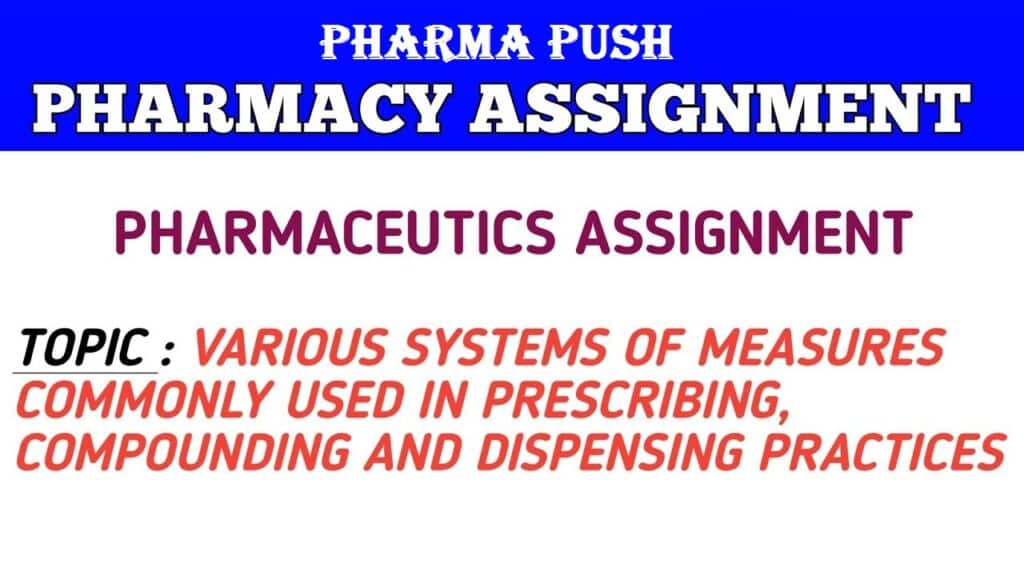Introduction
A pharmaceutical machine is basically a device that is used in the production of different kinds of medicines and drugs for the end-user. The machines can be used for the actual making of the medicines or for their packing. The companies belonging to the pharmaceutical sector make use of different kinds of machines that can help in making tablets, capsiles, liquids, ointments, powders and even cosmetics.
There is also the need for making liquids that can be used for injections and intravenous applications. If you are looking to launch a pharmaceutical company then it is of absolute importance that you get in touch with a leading manufacturer of these machines so that you can have top grade products as and when you need them.
Aim & Objective
The requirements of the pharmaceutical industry undergo a lot of change and evoluation on a continuous basis, just like any other sector. it has therefore made it mandatory for the companies belonging to this sector to constantly upgrade their operations so that they can meet the manufacturing requirement of this industry in an efficient manner. It is essential to note that pharmaceutical companies have extremely precise and definite requirements when it comes to manufacturing medicines and maintaining their level of quality.
For this reason, the firms that are involved in the designing and production of pharmaceutical machinery always adhere to highest manufacturing qualities and best industry practices, If you are keep on the getting top grade machinery that can help you to improve your production margins while at the same time stick to the precision level that is required, you must focus on machines that can help you to do the same.
Machine Involved in The Formulation
The Press IV High Speed Double Sided Rotary Tablet Press Machine
It is a vital piece of equipment utilized in the pharmaceutical industry for the manufacturing of pharmacy tablets. It is primary function is to compress powders or granules into tablets of uniform size, shape and weight.
You May Like: Various systems of measures commonly used in prescribing, compounding and dispensing practices
This machine operates by utilizing a series of rotating punches and dies to compress the powder or granules into tablets. Once compressed, the tablets are then ejected from the machine and can be collected for further processing and packaging.
Press II High Speed Double Sided Rotary Tablet Press Machine (GMP Model)
The Press II High Speed Double Sided Rotary Tablet Press Machine (GMP Model) is a state of the art piece of equipment that is widely used in the pharmaceutical industry to produce tablets. This machine is specifically designed to ensure that tablets are produced with high level of accuracy and consistency, while minimizing downtime. One of the key features of the PRESS-II machine is its double sided design, which enables it to produce tablets on both sides simultaneously.
Tablet Coating Machine
A tablet coating machine is a piece of equipment used in pharmaceutical manufacturing to apply a coating to tablets. The coating serves various purposes such as improving the appearance, taste masking, protecting the drug from moisture or light, and controlling the release of the drug.
Pharmaceutical mini tablet press machine
A pharmaceutical mini tablet press machine is a compact piece of equipment used in pharmaceutical manufacturing to produce small tablets in small batches. These machines are designed for research and development purposes, as well as for small-scale production of tablets with precise dosages and formulations. Here’s how a typical mini tablet press machine works:
- Feeding: The raw materials, typically in powder form, are fed into the hopper of the tablet press machine. This can be done manually or through an automated feeding system.
- Compression: The powder is then compressed into tablets using a set of punches and dies. The compression process involves applying high pressure to the powder within the die cavity, forming it into the shape of the tablet.
- Ejection: Once the tablets are formed, they are ejected from the die cavity. This can be done manually or automatically, depending on the design of the machine.
- Tablet Inspection: After ejection, the tablets may undergo inspection to ensure they meet quality standards in terms of size, weight, and integrity.
- Tooling Changeover (Optional): Mini tablet press machines often allow for easy tooling changeover, allowing manufacturers to produce tablets of different sizes and shapes by simply replacing the punches and dies.
- Cleaning and Maintenance: Regular cleaning and maintenance of the machine are essential to ensure its proper functioning and prevent contamination of the produced tablets.
Mini tablet press machines are used in pharmaceutical research labs, small-scale manufacturing facilities, and compounding pharmacies. They offer flexibility, precision, and efficiency in producing small batches of tablets for clinical trials, product development, and customized formulations.
When selecting a mini tablet press machine, manufacturers consider factors such as the tablet size range, production capacity, ease of operation, and compliance with regulatory requirements such as Good Manufacturing Practices (GMP). Additionally, modern mini tablet press machines may feature automation, data logging capabilities, and safety features to enhance productivity and compliance.
Double Cone Blender Machine
A double cone blender machine is a type of industrial mixing equipment used in various industries, including pharmaceuticals, food processing, chemicals, and cosmetics. It’s designed to blend dry powders and granules uniformly to create homogenous mixtures. The name “double cone” refers to the shape of the blending vessel, which consists of two conical sections joined together at their bases.
Here’s how a typical double cone blender machine works:
- Loading: The dry ingredients or powders to be blended are loaded into the double cone blender through the top opening, which is usually equipped with a lid or cover.
- Blending: The blender’s conical vessel rotates slowly around its central axis. As the vessel rotates, the materials inside are gently lifted and then allowed to cascade back down along the walls of the cone. This tumbling action facilitates thorough mixing and blending of the ingredients.
- Uniform Mixing: The design of the double cone blender ensures that the materials inside move in a tumbling motion rather than a turbulent one, which helps prevent segregation and ensures uniform mixing of the components.
- Discharge: Once the blending process is complete and the desired homogeneity is achieved, the blended mixture is discharged from the blender. This can be done manually by opening a discharge valve at the bottom of the blender, or the blender may be equipped with automatic discharge mechanisms for continuous operation.
- Cleaning and Maintenance: After each batch, the double cone blender should be thoroughly cleaned to prevent cross-contamination between different materials. Many modern double cone blenders feature easy-to-clean surfaces and removable parts for efficient maintenance.
Double cone blender machines are preferred for blending dry powders and granules that require gentle mixing without damaging the particles or altering their properties. They are commonly used in industries where precise blending and homogeneity are critical, such as pharmaceutical manufacturing (for blending powders for tablet formulations), food processing (for mixing dry ingredients in bakery or confectionery products), and chemical processing (for blending various chemicals and granular materials).
Instruments used for quality control
Quality control in various industries, including manufacturing, pharmaceuticals, food processing, and electronics, relies on a range of instruments and techniques to ensure that products meet predetermined standards and specifications. Here’s an overview of some commonly used instruments for quality control across different industries:
- Calipers and Micrometers: These precision measurement tools are used to measure dimensions such as length, diameter, and thickness of products with high accuracy, commonly found in manufacturing and engineering.
- Spectrophotometers: In industries like pharmaceuticals, chemicals, and food processing, spectrophotometers are used to analyze the chemical composition, purity, and concentration of substances by measuring their absorption or emission of light at different wavelengths.
- High-Performance Liquid Chromatography (HPLC): HPLC systems are extensively used in pharmaceuticals, biotechnology, and food and beverage industries for analyzing and separating compounds in mixtures. They are crucial for quality control to ensure the purity and consistency of products.
- Gas Chromatography (GC): GC is another analytical technique commonly used in industries such as petrochemicals, environmental analysis, and pharmaceuticals for separating and analyzing volatile compounds.
- X-ray Fluorescence (XRF) Spectrometers: XRF spectrometers are used for elemental analysis in metals, minerals, and alloys. They help ensure the composition and purity of materials used in manufacturing processes.
- Coordinate Measuring Machines (CMM): CMMs are used in manufacturing and engineering to measure the geometrical characteristics of complex parts and components, ensuring they meet design specifications.
- Tensiometers and Surface Tension Meters: These instruments measure the surface tension of liquids, which is critical in industries such as pharmaceuticals, paints, and coatings to ensure proper formulation and application properties.
- Particle Size Analyzers: Used in pharmaceuticals, cosmetics, and food processing, particle size analyzers determine the size distribution of particles in powders and suspensions, ensuring consistency and quality in the final products.
- Moisture Analyzers: Moisture analyzers measure the moisture content of materials, crucial for ensuring product stability, shelf life, and quality in industries such as food processing, pharmaceuticals, and agriculture.
- Hardness Testers: Hardness testers measure the hardness of materials such as metals, plastics, and rubbers, ensuring they meet specified hardness requirements for their intended applications.
- Microscopes: Microscopes are used for visual inspection and analysis of materials, components, and products at a microscopic level, helping identify defects, contaminants, and irregularities.
These instruments, among others, play a crucial role in quality control processes, helping industries maintain consistency, reliability, and compliance with regulatory standards and customer expectations.
Conclusion
In conclusion, quality control is a vital aspect of various industries, ensuring that products meet predetermined standards, specifications, and regulatory requirements. A wide range of instruments and techniques are employed for quality control purposes, tailored to the specific needs and characteristics of each industry.
From precision measurement tools like calipers and micrometers to advanced analytical instruments such as spectrophotometers, chromatography systems, and surface tension meters, each plays a crucial role in assessing and maintaining the quality and integrity of products.
Additionally, instruments like coordinate measuring machines (CMM), particle size analyzers, moisture analyzers, and hardness testers contribute to the comprehensive assessment of materials and components, helping to identify defects, inconsistencies, and deviations from quality standards.
By employing these instruments and techniques effectively, industries can ensure product reliability, consistency, and compliance with regulatory standards, ultimately enhancing customer satisfaction and trust.



thank you so much
Overview of various machines / equipments/instruments involved in the formulation and quality control of various dosage forms formulations. pharmaceutical